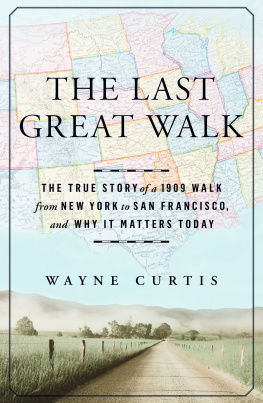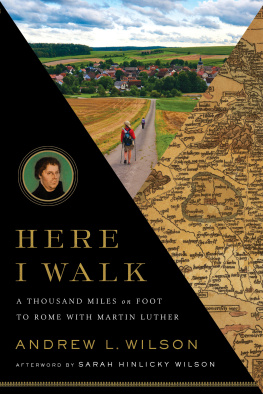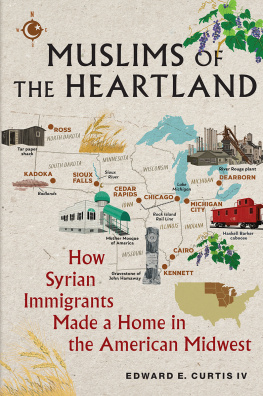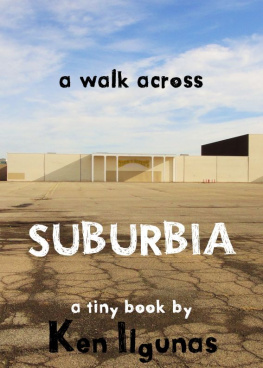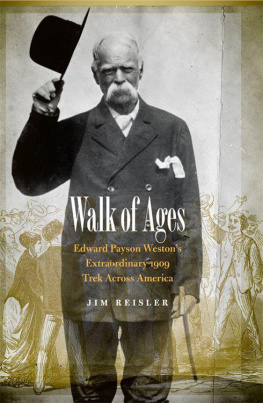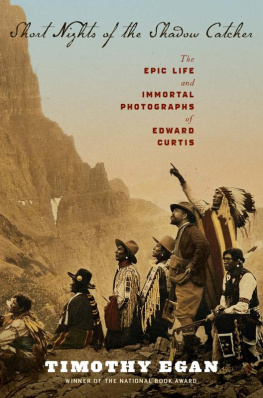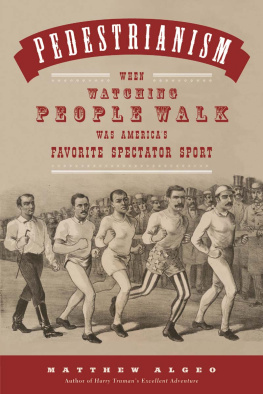
There is a lot in our busy, hyper connected modern world that can be solved by walking. Taking long walks can improve our well-being, boost cognitive performance and creativity, and help us tap into our wisdom and capacity for wonder. Wayne Curtiss colorful recounting of Edward Payson Westons 1909 walk across America is a timely and inspiring reminder of what we stand to gain physically and spiritually by simply walking.
Arianna Huffington,
president and editor-in-chief of the Huffington Post Media Group
Animated by the once-sensational, now-forgotten last walk of a turn-of-the-century champion pedestrianyes, they existedWayne Curtis has gifted us with a kind of metaphysical self-help book, good for mind, body, and the national soul. An impassioned celebration of what makes us human.
Tom Vanderbilt,
author of Traffic: Why We Drive the Way We Do (and What It Says About Us)
Smart, engaging, and tremendously fun to read, The Last Great Walk introduces us to Edward Payson Weston, probably the greatest, if forgotten, walker of modern times, and reminds us, gently but persuasively, that all of us, as humans, are born to walk.
Gretchen Reynolds,
author of the New York Times Phys Ed column and The First 20 Minutes:
Surprising Science Reveals How We Can Exercise Better, Train Smarter, Live Longer
For Louise
CONTENTS
INTRODUCTION
Early on a warm spring day a couple of years ago, I set off on foot from downtown Manhattan for Tarrytown, a leafy suburb about thirty miles to the north. My plan was to follow along the same route and along the same streets that a man named Edward Payson Weston walked on March 15, 1909, the day he left New York en route to San Francisco. I knew precisely where to go because reporters dogged Weston for much of that first day and wrote up his route in considerable detail.
Weston was a famous walker, a term that may create some confusion. But through much of the latter half of the nineteenth century, the fleetest of foot could actually make a living as a walker, just as one could command a salary as a poet. Professional walkers tended to come from the lower classes. They walked and walked, sometimes absurdly long distances (Weston once walked five thousand miles in one hundred days), and people often wagered on whether solo walkers would achieve their targets, or if they would beat another when competing head-on, like mares in a sweepstakes.
Had you been around when Weston was walking, he likely would have caught your attention as he passed by. He was born in 1839 to a middle-class family that had long disapproved of his chosen career. So he often exhibited a sort of sartorial overcompensation, wearing clothing that he believed would convey a certain stature and be memorable in the bargain.
His fondness for extravagant dress was often noted in reports about his travels. On a long 1867 walk to Chicago, he emerged from his hotel room, a reporter wrote, in an elegant suit of broadcloth, patent leather boots, and green kids to match. Two years later, on a walk from Bangor, Maine, he was conspicuously dressed in a showy uniform with a lofty white plume stuck in a military cap. A year later, he walked in New York attired in purple velvet pants, white stockings, ordinary laced gaiters, and a spotted linen shirt. At other times he favored a naval suit similar to that worn by Marine Corps officers, with shoulder knots, and a forage cap of beaver richly ornamented with bullion and surmounted by a white cockade. Further accounts of Weston read like an inventory of lapsed fashion: Hed wear a volunteers tunic, cricket or yachting cap, knickerbockers or leggings. A California correspondent noted his white hat, short roundabout, knee pants and red woolen stockings. And this: When walking in the summertime, Weston wears a white blouse waist similar to a Lord Fauntleroy waist, knee trousers and leggings, reported one newspaper in 1909. He wears this sort of clothing so that he can be easily detected, and so that he will not be mistaken for some person riding on a train. He was also given to capes.
His fashion choices probably didnt help, but by 1909 Weston was already on his way to becoming a relic. Long-distance walking competitions were falling out of favoras a point of context, note that 1909 was the year of the first race at the new Indianapolis Motor Speedway. But pedestrian competitions hadnt completely faded. Two days before Weston left New York in March 1909, a walking match had started up at Madison Square Gardena six-day go-as-you-please race, with the winners dividing a pot of $5,000. Contestants included walkers from France, Italy, Belgium, Holland, Ireland, Greece, Germany, Switzerland, Scotland, and England, and representatives of the Igorot tribe from the Philippine Islands. A military team and a group of letter carriers represented the United States, as well as Indians from the Mohawk and Sioux tribes, against a field that included Guido Pallanti, an Italian walker and the recognized world champion since 1904. Large crowds came out to watch, but even then it was seen as a sort of retro spectacle, a glimpse not so much at the modern, but at a feral endeavor that had crept out of a burrow and that many, no doubt, believed would soon creep back in.
Also contributing to the notion that Weston was a vestige of a bygone era: The day he left New York City, he turned seventy years old.

Following in Westons footsteps, I started at City Hall Park, which today is a peaceful Edwardian oasis of trees, shrubs, and marble set amid gleaming white, gray, and brownish towers that appear to squeeze upward owing to Manhattans narrowing toward its southernmost tip. The park is anchored by an elegant urnlike fountain designed by the same sculptor who had a hand in creating Central Parks Bethesda Fountain. To the north is New Yorks City Hall, a Beaux Arts structure that somehow manages to be both frivolous and stern at once. City Hall faces south, built on what was at the time the northernmost edge of the city; few anticipated that New York would continue to grow the way it did, leaving City Hall to turn its back on most of the city. Six years before Weston set off, the parks gaslights had been replaced by modern electric lights.
I arrived shortly after dawn and spent a moment watching a maintenance worker wading up to his knees in the fountain, trying to unclog a drain. Nodding sympathetically, I turned north and began my walk, leaving the worker in a pale, champagne light and heading up Park Row. Passing the elegant pedestrian entrance to the Brooklyn Bridge, I soon entered an urban canyon flanked by the neoclassical US Courthouse and the US Court of International Trade, a pair of monumental buildings with intricately articulated stone brackets and pediments and columns, the sort of details rendered invisible when passed in a speeding cab but forming a visual symphony when viewed on foot. (This area around Foley Square hadnt yet developed its heroic character when Weston walked through, but a plan for grandeur was under way.) The urban drama of the intersection had attracted a trio of twentysomething Italian tourists, who took turns snapping pictures of one another lying down in the roadway during gaps in taxi traffic. I slowed my pace, waiting to see if any of them would be run over as sacrifices on the altar of some Instagram photo album (they werent), so I pushed on through the lower foothills of commerce before winding my way to Broadway. I then turned up Fifth Avenue, striding into one of the most impressive urban chasms in the worldthe sun brighter and shimmery now, and the vistas long and attenuatingand continued on toward Central Park.
Next page
